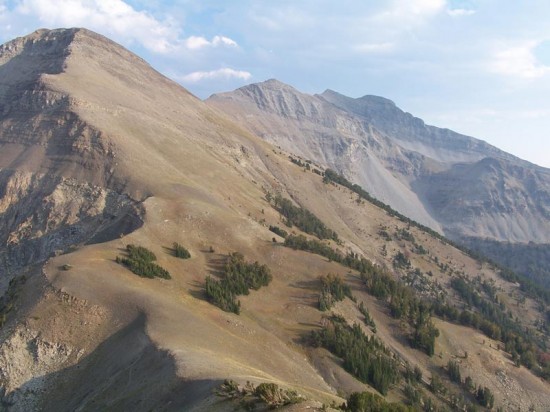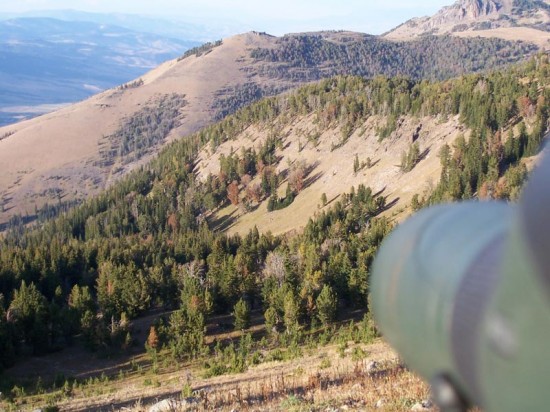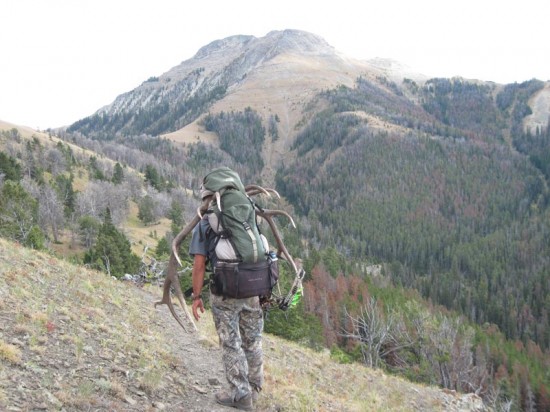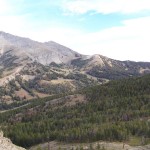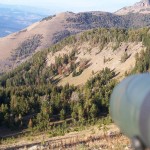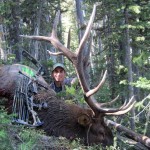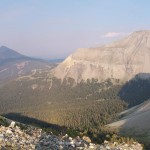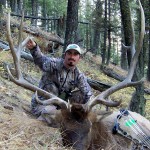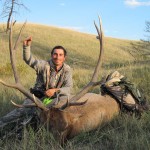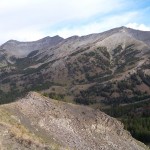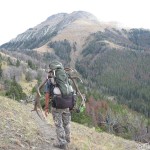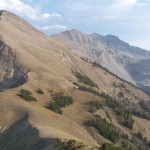by Brian Barney
Late Friday night, early in September. I finish work and pound out the last of my elevation to arrive at my 1st night bed. Its dark now, bugles and cow sounds are erupting all around me as I refuel on a mountain house and water. I am home in the wilderness.
Ready for the challenge of arrowing a mature bull. Early in my elk hunting career I could find elk, but would always get beat in the end. With years of experience, and a burning desire to kill big mature bulls, I have come up with these new school techniques to help punch my tag year after year. Read on to see how these tactics paid huge dividends in my 2009 elk season.
My first objective is location. I use high vantage points to glass and listen for bulls. I move allot during elk season. If I don’t see elk during prime time, I move. I work back ridgelines to different glassing positions and basins. I don’t bugle because I don’t want to put the herd on high alert. I have seen mature bulls take their cows and clear out of the area after hearing just a of couple calls. Now I know, there are hundreds of videos and experiences to prove me wrong. I have called multiple bulls in myself. I have found the majority are smaller satellite bulls. The big guys come in too, but usually on extreme high alert. They come in facing, and as spooky as a bucking horse in the chute. I am not saying ignore calling altogether, just wait for the right time. Realize that bulls bugle to the harem whether you call or not. Listen for and use their bugles to get there position, rather than notifying the bulls where you are. Don’t get caught up in trading bugles with bulls. Usually they are answering calls, and moving their harem somewhere else. Elk behaving naturally are caught up in the rut, this is an archers best chance. You get to choose when and where the hunt will take place.
How many times have we all seen our scent ruin a perfect scenario? Sneaking in or calling and suddenly the mountain explodes with the sound of thundering hooves. This will be the number one challenge. Use dominant wind directions, and thermals to your advantage. I have found hunting on north slope basins in south wind creates near impossible swirling winds. South slope in south winds are very consistent. Use a powder wind checker at all hours of every day to monitor winds, and map out direction. Mountain draws, and ridges are all different in the way they draw and deflect wind and thermals. Knowing the wind and acting on it are two different things. Be disciplined enough to pull off the bull of your dreams if the wind is not right.
I use two modified techniques for bulls, seductive calling and spot and stalk. When calling, I keep my calls away until I am ready to risk “all in.” You get one chance at bulls, a spooked bull will put miles and mountains between you in short order. Watch the herd and wait for your opportunity. Look for the herd to head for a saddle, or bedding timber where you can cut them off. I have found when calling it is not so much what you sound like, it is where you call from. If you are where the bull is heading anyways, it does not take much effort to come check you out. I like to get as close as I dare in front of the bull and then use a few seductive cow calls.
Spot and stalking bulls during the rut is my favorite technique. A wind in my face, I love my chances moving in. I almost always stalk bulls morning and night when they are out feeding. I have also had good luck when elk are transitioning from feeding to bedding. Don’t chase elk into their beds unless you can see them, and the bull is in a vulnerable spot. I had tons of wasted oppurtunitys barging in on elk that I put to bed in some timber. More times than not, I spooked the herd leaving myself no play in the evening. I like to get into striking distance any where from 200 to 800 yards and “coyote” the herd. I will hold up when I can see the elk. Once the scenario looks right, I slip on my wool socks and move in. I like to carry my boots with me on the stalk just in case I have to follow a moving herd. I move quickly at first using the contour of the land. Once I can see elk I let the body language of the elk determine when to freeze in place, and when to creep in. If you catch a bull tearing up a tree, get aggressive. He can’t see well, and he can’t hear well which will equal a high percentage stalk. Stalking bugling rut crazed bulls will turn your legs to rubber, remember keep your focus and deliver a perfect arrow.
My 2009 elk season ended kneeling behind a great general archery season wilderness bull. I caught this great 6 point tending his cows late one morning after making it to a rock outcropping. I thought I was going to be a spectator till evening. Then the herd started crossing into another basin. The bull was bringing up the back, bugling the whole way. Suddenly the bull pealed off into some timber, with his cows continuing on into the next basin. The race was on to cut off the bull at the saddle. Adrenalin flowing, I was running through the timber over logs and under branches. Close to the saddle I slowed my pace to see the bull appear on cue. He moved quickly with his nose to the ground following the scent left by his harem. There was a stiff wind probably 15 miles per hour right in the bulls face. I let him cross 70 yards out in the open, and then took up pursuit. With the bull on a mission and the wind covering my noise I was “all in” jogging right behind this bull in bow range. There was no shot angle, and he would not stop moving. Up ahead the drainage turned which would put that bull at a good angle. I raced ahead, and knelt in front of a bush. As the bull turned I was already at full draw, mouthed my loudest cow call and settled in. The shot was true and soon I followed up the blood trail to my trophy. All those tough years of hard knocks has come full circle to serve bowhunting justice. What a great Madison valley bull!
